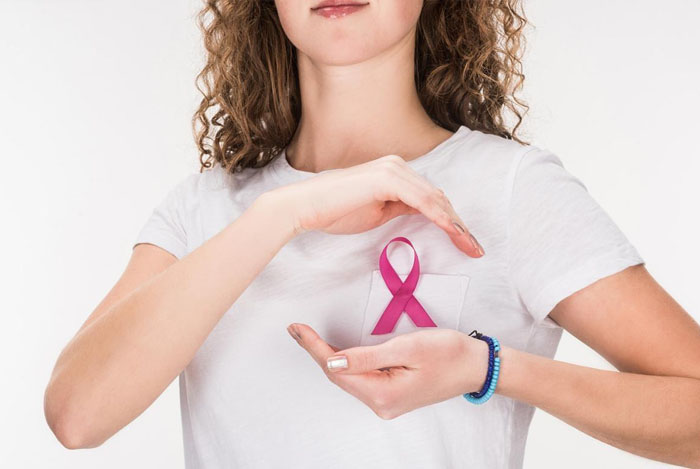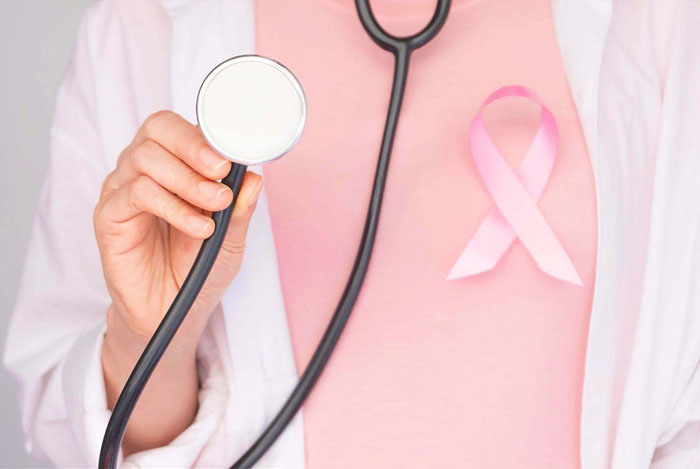- Login
- Cart{{shopingCartNum}}
- English
Breast cancer is a malignant tumor originating from the breast tissue. It usually begins in the breast ducts (called ductal carcinoma) or lobules (called lobular carcinoma). While this disease primarily affects women, men can also develop breast cancer.

1. No obvious symptoms: Breast cancer in its early stages may not present any noticeable signs or symptoms, highlighting the importance of regular screening.
2. Breast lump: The most common early sign, often a painless, hard, and irregularly shaped lump.
3. Nipple discharge: Non-lactating nipple discharge, which may be bloody, serous, or of other natures.
4. Changes in breast skin: Slight dimpling (retraction), orange peel-like changes, redness, flaking of the nipple or areola skin.
5. Nipple retraction: Inward turning or change in position of the nipple.
1. Enlargement of the lump: Breast lumps may become more noticeable, feel harder, and have reduced mobility.
2. Enlarged lymph nodes: Approximately one-third of patients may have enlarged axillary lymph nodes, which may be mobile in the early stages and later become fixed.
3. Further skin changes: More pronounced orange peel-like changes, possibly accompanied by skin ulcers, redness, or pain.
4. Nipple discharge or bleeding: Persistent or intermittent discharge, possibly with blood.
1. Symptoms of distant metastasis:
2. Bone metastasis: causing pain and pathological fractures.
3.Lung metastasis: leading to coughing, hemoptysis, chest pain, and difficulty breathing.
4. Liver metastasis: possibly resulting in ascites, abdominal masses, jaundice, and digestive disturbances.
5. Brain metastasis: causing headaches, visual problems, nausea, vomiting, and balance issues.
6. Systemic symptoms: Weight loss, fatigue, anemia, fever, and loss of appetite.
1. Breast pain: While not a typical symptom of breast cancer, some patients, especially in the advanced stages of the disease, may experience hidden pain, swelling pain, or stabbing pain.
2. Changes in breast appearance: Asymmetry in breast shape or size, tight or thickened skin.
Importantly, the symptoms of breast cancer are not always obvious, and in the early stages, they may resemble other benign breast diseases. Therefore, regular breast self-examination and screening at professional medical institutions are crucial for early detection and treatment. If any of the above symptoms occur, prompt medical attention for professional evaluation is recommended.

1. Family history and genetic factors: Women with a family history of breast cancer, especially if their mother, sister, or daughter has had breast cancer, particularly before menopause or with bilateral breast cancer, are at higher risk. Women carrying gene mutations such as BRCA1 or BRCA2 have significantly increased risks of breast cancer.
2. Hormonal factors: Prolonged hormonal imbalances, such as early menarche (before 12 years of age), late menopause (after 55 years of age), nulliparity, late parity (first full-term pregnancy after 35 years of age), and lack of breastfeeding, expose the breast to higher levels of estrogen, increasing the risk.
3. Lifestyle and environmental factors: Obesity, especially postmenopausal obesity, unhealthy dietary habits (high fat, high sugar, fried foods), lack of exercise, long-term alcohol consumption, smoking, and prolonged exposure to ionizing radiation or certain chemicals, increase the risk.
4. Medication use: Prolonged use of estrogen-containing contraceptives or hormone replacement therapy may increase the risk of breast cancer.
5. History of breast diseases: Women with a history of fibrocystic changes, atypical hyperplasia, or papilloma have a higher risk.
6. Psychological and emotional factors: Women under prolonged significant psychological stress, with obvious psychological trauma or irregular lifestyles, are more prone to endocrine system imbalances and may have an increased risk.
7. Other medical conditions: Women with a history of diabetes, functional uterine bleeding, endometrial adenocarcinoma, or those who have undergone chest radiation therapy are also at high risk of breast cancer.
Although the above factors increase the risk of developing breast cancer, it does not mean that women with these characteristics will definitely develop breast cancer. For high-risk populations, it is important to take preventive measures and undergo necessary monitoring and interventions under the guidance of a doctor.

The treatment of breast cancer varies depending on individual conditions and generally includes the following main methods:
1. Surgery: including breast-conserving surgery and mastectomy.
2. Radiation therapy: using high-energy radiation to kill cancer cells.
3. Chemotherapy: using drugs to kill rapidly dividing cancer cells.
4. Hormone therapy: for hormone receptor-positive cancer, slowing or stopping the growth of cancer cells by suppressing hormone action.
5. Targeted therapy: treating cancer cells by targeting specific proteins with certain drugs.

While breast cancer cannot be completely prevented, the risk can be lowered and early detection opportunities can be increased through a healthy lifestyle and regular screening. Here are some suggestions:
1. Maintain a healthy weight: Excessive obesity is an independent risk factor for breast cancer.
2. Balanced diet: Consume foods rich in vitamins and minerals, and reduce the intake of red meat and processed foods.
3. Regular exercise: Engage in at least 150 minutes of moderate-intensity exercise per week, such as brisk walking or cycling.
4. Limit alcohol consumption: It is recommended that women do not exceed one alcoholic drink per day.
5. Regular screening: Women over 40 years old should undergo annual mammography screenings; specific recommendations should be sought from a doctor.
6. Psychological support and rehabilitation: The treatment process for breast cancer is not only a physical test but also a challenge to one's mental and emotional well-being. Establishing a good psychological support system is crucial for recovery.
Breast cancer is not terrifying; what is truly frightening is ignorance and neglect of it. Through scientific preventive measures, early screening, and modern treatment methods, many patients can overcome breast cancer and continue to enjoy a healthy and happy life.